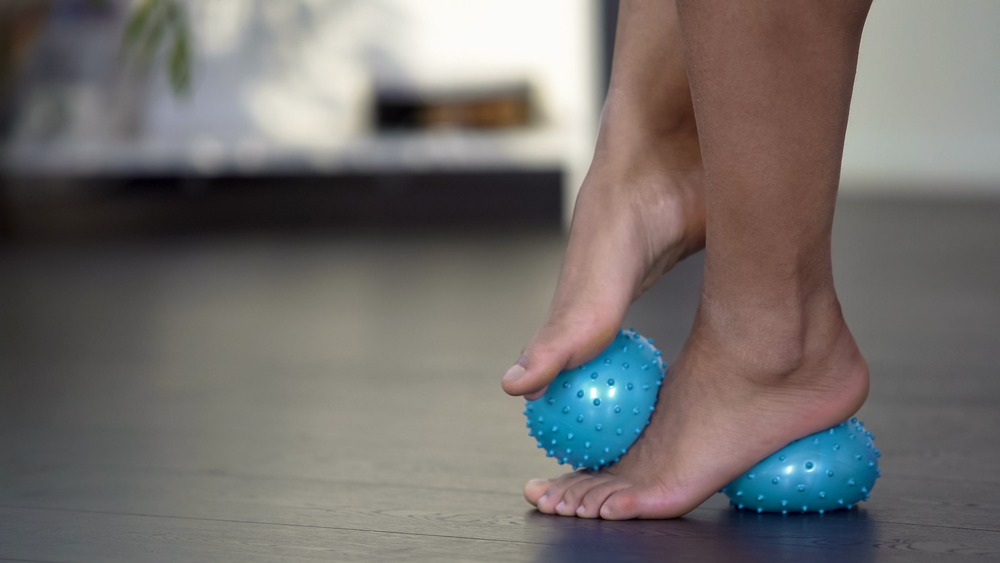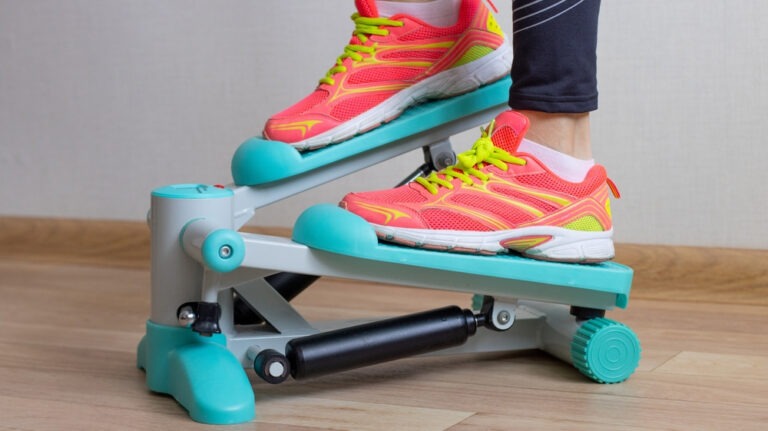As an Amazon Associate. We get small commissions for purchases made through affiliate links in this post at no extra cost to you. More info. Amazon Affiliate Disclaimer

Overview of Plantar Fasciitis
Plantar fasciitis is the inflammation of the ligament (like a band) that connects the heel with the toes beneath the foot which causes a stabbing pain in the heel.
There are several causes and risk factors that could increase plantar fasciitis from happening such as obesity, overuse and other medical conditions …etc
Plantar fasciitis is a curable condition. Between 4% and 7% of the community has heel pain at any given time: about 80% of them are due to plantar fasciitis.
About 90% of plantar fasciitis cases improve within 6 months with conservative treatment, and within a year regardless of treatment.
Affected people use many treatments for plantar fasciitis, but in this article we’ll talk about one of the most common effective plantar fasciitis treatment methods which is the best physiotherapy home exercises like stretching and releasing exercises.
How to do the Best 7 Exercises to Cure Plantar Fasciitis
Below we’ll talk about the best recommended exercises for plantar fasciitis that prescribed by the top physiotherapy experts in the world, which are:
1) Calf muscle stretching
The tightness of the calf muscle increases the load on the plantar fascia and makes the pain of plantar fasciitis worse. To decrease the tightness try the following stretching exercise or you can use ankle roller:
- Lean your hands against a stable surface such as a chair or a wall
- Take your leg and push it out
- Keep your both feet flat, apart and your heels touch the ground
- Straighten your knee out
- You should sense a stretch in the calf muscle but don’t push through the pain
- Hold for 30-60 seconds
- Repeat 3-5 times
2) Stretching the plantar fascia
To relief the tightness in the plantar fascia band, try this exercise:
- Sit on a chair
- Place your affected leg across the other leg
- Place your fingers across the base of the toes
- Pull back the toes towards the shin until you feel a stretch in the plantar fascia.
- Hold for 10-20 seconds
- Repeat that 5-10 times
3) Rolling massage for the plantar fascia
Place a round object under the foot such as rubs ball, golf ball, tennis ball, or special foam roller. Then follow these steps to release the plantar fascia:
- Sit in a chair in a comfortable position.
- Place the rolling device under your foot, beneath the point you want to massage
- Move the round object forward and backward and in a circular motion while keeping slight pressure.
- Keep doing for 1-2 minutes for each point you want to relieve.
- Repeat 2-3 times a day
4) Calf muscle release
This is another very effective exercise to relax calf muscle and decrease the tightness, by using the foam roller device like the following:
- Balance with your roller under one calf
- Keeping your buttocks just off the floor
- Point toes up and out for full muscle release
- Get deeper release by place the other leg across the leg you want to release.
- Keep releasing 30-60 seconds
- Repeat 1-2 times on each leg
5) Foot and leg flexes
Flexing the foot while sitting on the ground with extended legs by using the elastic band (Theraband) is a good way to increase blood flow to the foot and to decrease the tightness of calf muscle and plantar fascia with each others.
Try the following steps:
- Sit on the floor with extended legs
- Raise your affected leg over an object like a roller
- Place the elastic band around the ball of your foot while keeping your legs stretched out in front of you
- Pull the top of your foot towards you using the elastic band
- You should feel a nice stretch in your calf muscle
- Don’t go beyond the tolerated stretching sensation
- Hold for 20-30 seconds
- Repeat 3-5 times
6) Towel Scrunch
Curling a towel with the toes can strengthen the small muscles in the arches of the foot and decrease the stress on the plantar fascia. Try doing this strengthening exercise before standing in the morning. Try the following steps:
- Sit on a chair
- Place the towel under your foot
- Scrunch the towel by your toes then pull it
- Hold for 5-10 seconds each time
- Repeat that 10 times
7) Ankle Pumps
Good flexibility of the ankle joint affects the flexibility of your feet by moving the front and back muscles of the leg, by moving the ankle joint upward and downward. Try the following steps:
- Sit on the floor or a lie on a bed
- Move your foot and toes towards the shin
- Then push away from the shin
- Hold 2-3 seconds each time
- Repeat 5-10 times
Stretching Exercises – Steps to do before
There are two recommended steps or remedies you should start with or before doing the stretching exercises, which enhance the effect and make you get the best results of that exercises. By following steps:
-
RICE method
- Rest
Rest your feet from doing any effort that increases pain or inflammation of the plantar fascia.
- Ice
Apply ice for 15-20 minutes to your sole of the foot, before doing the exercises to decrease pain and inflammation
- Compression
Wrapping of the affected foot with an elastic medical bandage to decrease swelling and sensation of pain. You want it to be snug but not too tight.
- Elevation
Raise your affected foot above the level of your heart. This can help to reduce pain, throbbing, and swelling of your feet.
-
Take your prescribed medications
NSAIDs such as aspirin or ibuprofen can help you to get the maximum relief from plantar fasciitis pain. You can get the best results by taking your medications before performing the exercises.
Get Great Reviews & Buyer Guides into Your Inbox
REFERENCES AND RESOURCES
- Beeson P, September 2014. “Plantar fasciopathy: revisiting the risk factors”(PDF). Foot and Ankle Surgery. 20 (3): 160–5.
- Goff JD, Crawford R, September 2011. “Diagnosis and treatment of plantar fasciitis”. American Family Physician. 84 (6): 676–82.
- Cutts S, Obi N, Pasapula C, Chan W, November 2012. “Plantar fasciitis”. Annals of the Royal College of Surgeons of England. 94 (8): 539–42
- Tahririan MA, Motififard M, Tahmasebi MN, Siavashi B August 2012. “Plantar fasciitis”. Journal of Research in Medical Sciences. 17 (8): 799–804.
- Tu P, Bytomski JR, October 2011. “Diagnosis of heel pain”. American Family Physician. 84 (8): 909–16
- Molloy LA, November 2012. “Managing chronic plantar fasciitis: when conservative strategies fail”. JAAPA. 25(11): 48, 50, 52–3
- American Academy of Orthopaedic Surgeons. 2010. Archivedfrom the original on 16 June 2014. Retrieved 17 Feb 2020.
- Emily N Schwartz, MD, “Plantar Fasciitis: A Concise Review”, The Permanente Journal, 18(1): e105–e107
- Foot and Ankle Conditioning Program









